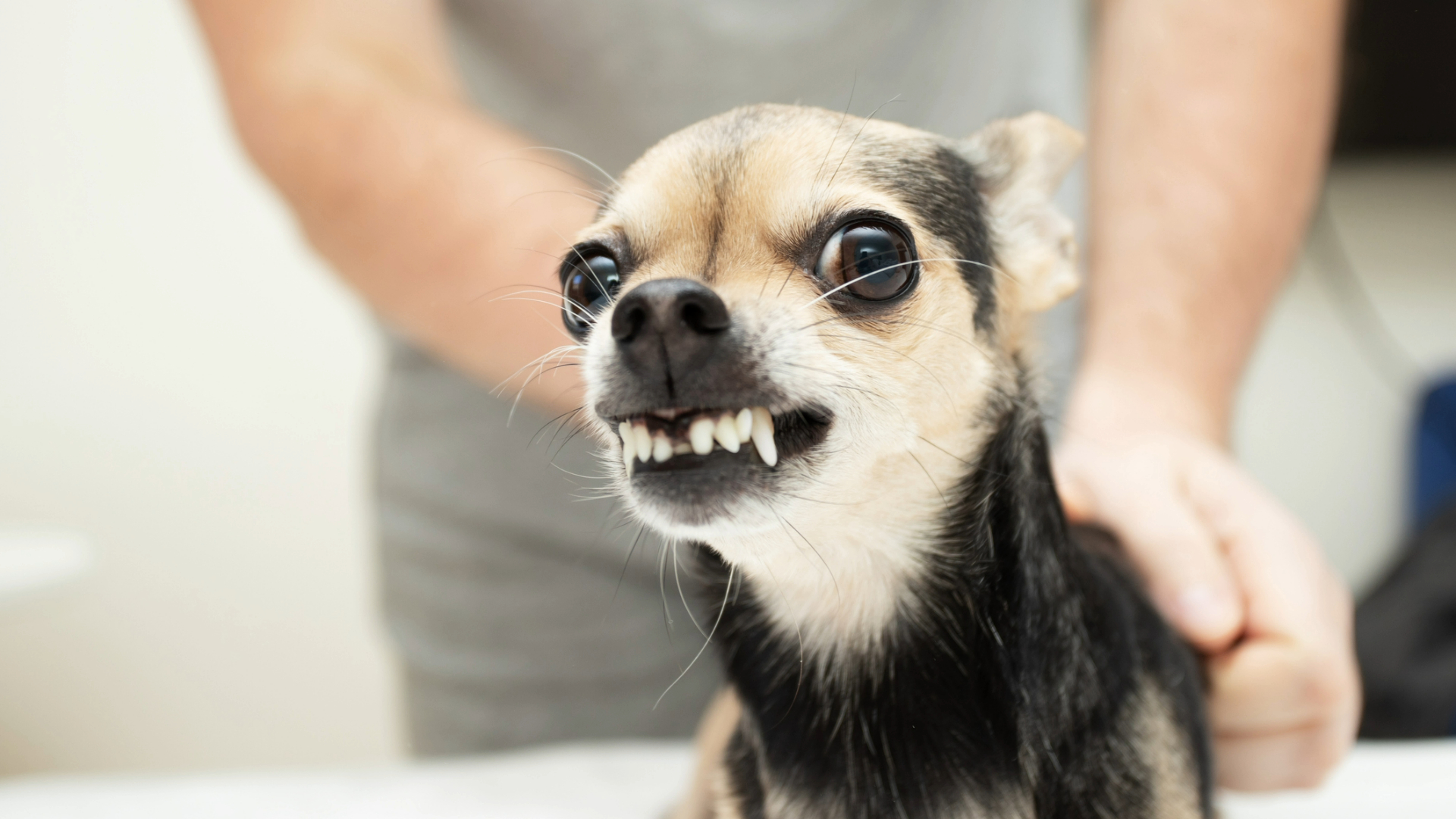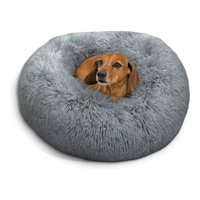Is your dog reactive around strangers? Try these 3 simple tips from a trainer
If your dog struggles with reactivity, these tips will be game-changing (we didn’t see number three coming).

Owning a reactive dog can make the little things in life more challenging - whether it’s taking them for a walk or just having some guests over. These might not seem like scary situations to us humans, but for a reactive dog, it can expose them to their triggers and cause them to behave in unwanted ways.
If your dog struggles around new people, then they might bark, jump, and have difficulty listening to you. They might also struggle eating (even if it’s one of the best dog treats).
Karishma Warr, head of training and behavior at Calm Canine Academy, recently shared some brilliant advice on how to help your dog deal with this.
A post shared by Calm Canine Academy (@calmcanineacademy)
A photo posted by on
1. Understand your dog
Karishma explains that your dog isn’t operating from a logical place and that it’s usually a response to feeling scared and overwhelmed. It’s not something they’re choosing to do - it’s an involuntary response. If your dog wasn’t introduced to a variety of people from a young age (before 12 weeks), or they have had trauma in the past, then this might be a reason for the behavior.
They explain that even though their dog body language appears big and tough, they’re actually feeling insecure and are unsure of how to get their safety and social connection needs met.
They say: “I just want to bat away this idea that your dogs are conspiring to be naughty in these moments and that your dog is choosing to be disobedient. That is absolutely not what’s happening.”
PetsRadar Newsletter
Get the best advice, tips and top tech for your beloved Pets
2. Don’t focus on obedience
If your dog is displaying unwanted behavior, like lunging or growling, then you might interpret this as them being protective or dominant. Karishma says that lots of owners think that they need to show their dog who is boss and practice obedience as a solution.
However, you might be surprised to hear that this isn’t the best way to fix reactivity in dogs. Instead of focusing on their behavior (which can actually make them feel more anxious), they advise focusing on how they are feeling in the moment.
They say: “Obedience is not the solution to a [...] feeling of unsafety. [...] If I’m telling [my dog] to lay down around something he’s scared of, he would do it but inside he is not going to feel super good. [...] Being stuck in an environment and being pressured into being still can be even more scary.”
They recommend introducing a system where your dog feels comfortable around new people. In time, they will start wanting to connect with them and build a relationship. However, they say that it’s still important to teach your dog reliable cues.
3. Don’t use treats to coerce your dog
If your dog is scared of a stranger, that person should give them a treat to build their trust - right? That’s what we thought too, but Karishma says that this can actually have a negative impact on your dog and their relationship with food. This is a common mistake many dog parents have made (including us), so don’t worry too much if you’ve done this before.
When Karishma did this in the past, their dog stopped taking food from them and struggled to eat - associating it with uncomfortable situations. It also encourages the dog to get too close before they are ready.
They say: “[...] Avoid putting our dogs in situations where they are being coerced into interactions with human beings and instead, facilitate scenarios where they are genuinely getting curious, genuinely interested and able to gather information in a way that doesn’t have that tinge of anxiety around that.”
For more advice on reactive dogs, check out these features: My reactive dog impacted my entire household, here's what I did about it and owning a reactive dog is hard. Here's how I navigated the social challenges with my pooch.
Best Friends by Sheri Luxury Shag Faux Fur Donut Cuddler
If you’ve got guests coming round, your dog will appreciate a warm and cozy safe space. This donut bed is as snuggly as they come and is made with eco-responsible poly-fil. It’s available in five different sizes, so you’ll find one that’s just right for your pup.

Megan is a Staff Writer at PetsRadar, covering features, reviews, deals, and buying guides. She has a wealth of experience caring for animals, having grown up with dogs, cats, horses, guinea pigs, and more throughout her life. She studied BA Journalism at the University of Westminster, where she specialized in lifestyle journalism and was editor of Smoke Radio’s lifestyle website. Megan works alongside qualified vets and accredited trainers to ensure you get the best advice possible. She is passionate about finding accurate and helpful answers to your pet-related questions.

